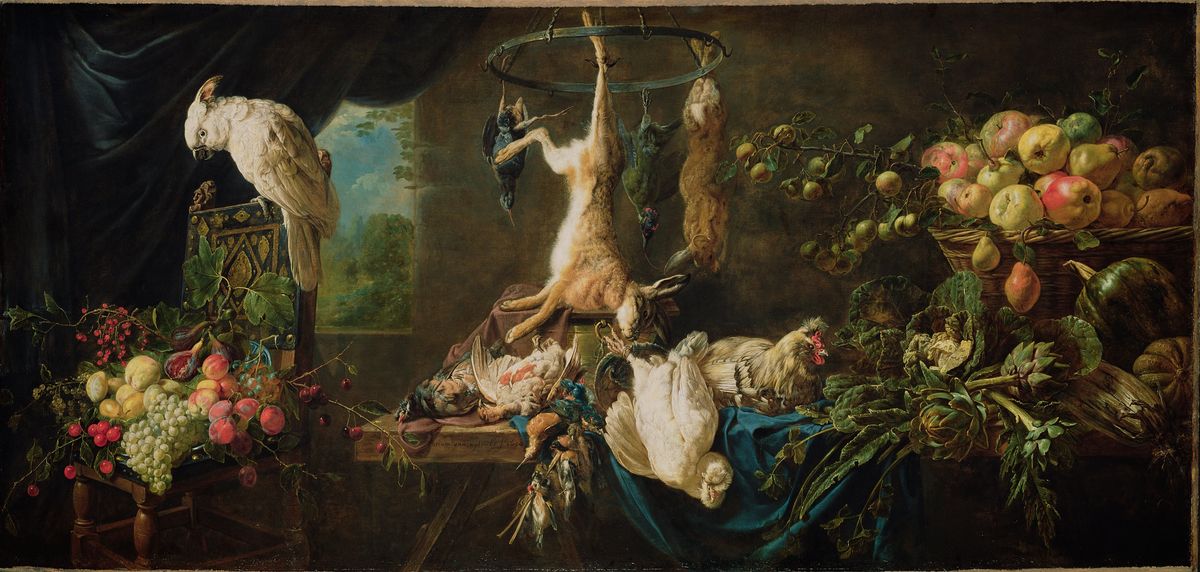The realm of Make-as-You-Play adventure games is a burgeoning field that blends interactive storytelling with player-driven creativity. This genre invites gamers to not only traverse imaginative landscapes but to shape them, crafting unique narratives and worlds as they play. The rise of this genre marks a significant shift in gaming culture, emphasizing the role of the player as a co-creator and highlighting the collaborative nature of modern game development. As we delve into the intricacies of these games, we uncover the essence of what makes them so captivating and influential in the gaming community.
Key Takeaways
- The Make-as-You-Play genre revolutionizes gaming by empowering players to create and modify their game experiences in real-time.
- Pioneering titles like ‘Deep Future’ and ‘Last Haiku’ exemplify the genre’s focus on exploration, creativity, and interactive storytelling.
- The Make-As-You-Play Games Guild plays a crucial role in fostering a community of creators, facilitating collaborative development and sharing success stories.
- Game mechanics in this genre are carefully designed to balance freedom with structure, ensuring that player choices have meaningful impacts on the game world.
- Future advancements in technology and emerging trends suggest that the Make-as-You-Play genre will continue to evolve, offering even more immersive and personalized gaming experiences.
The Genesis of Make-as-You-Play

Defining the Make-as-You-Play Genre
The Make-as-You-Play genre represents a fusion of gaming and creativity, where the act of playing and the process of creation are intertwined. Players are not just consumers of content; they are active participants in the game’s evolution, shaping their own experiences and outcomes. This genre is characterized by its unique styles, objectives, features, characteristics, mechanics, player experience, and thematic elements.
In essence, the genre is about giving players the tools and freedom to craft their own narratives and challenges within the game’s framework. It’s a space where the lines between developer and player blur, leading to a more personalized and engaging gaming experience.
The Make-as-You-Play genre is a testament to the power of interactive creativity, where every choice can lead to a new direction in gameplay.
Some of the pioneering titles in this genre include ‘Deep Future’, ‘Big Picture’, ‘Star Charter’, and ‘Last Haiku’, each offering a different avenue for player-driven storytelling and world-building.
The Inception of Interactive Creativity
The inception of interactive creativity marked a paradigm shift in the gaming industry. Players were no longer mere spectators but became active participants in the storytelling process. This evolution was not instantaneous; it was a gradual process that involved experimentation and innovation.
- Early attempts at interactive creativity often involved branching narratives, where players could influence the story based on their choices.
- The introduction of modifiable environments allowed for a more tangible form of creativity, as players could alter the game world itself.
- The emergence of AI-driven characters and scenarios further enhanced the dynamic nature of these games, creating personalized experiences.
The true essence of interactive creativity lies in its ability to foster a sense of ownership and connection between the player and the game world.
As the concept of interactive creativity took root, it paved the way for a new genre of games that emphasized player agency and creativity. The impact of these developments is still felt today, as modern titles continue to explore and expand upon the foundations laid by their predecessors.
Pioneering Titles and Their Legacy
The legacy of pioneering make-as-you-play titles is profound, shaping not only the genre but the entire landscape of interactive entertainment. These games introduced mechanics that allowed players to leave a permanent mark on the game world, creating a sense of ownership and investment that was previously unheard of in digital gaming.
- Ticket to Ride revolutionized the concept of legacy in board games, setting a precedent for future titles.
- Dice Bloodline took a creative spin on the genre, blending family tree creation with gameplay, showcasing the versatility of make-as-you-play mechanics.
The true essence of legacy games lies in their ability to evolve with the players, creating a unique narrative tapestry that is woven over time.
The impact of these games is evident in the player archetypes they have created, from those seeking big moments to those who enjoy the emergent growth of the game’s narrative. The legacy genre’s appeal is its capacity to cater to a diverse range of player motivations, from the thrill of risk-taking to the satisfaction of completing a complex, evolving storyline.
Exploring the Guild: A Community of Creators

The Role of the Make-As-You-Play Games Guild
The Make-As-You-Play Games Guild serves as a pivotal hub for creators and players alike, fostering an environment where collaboration and innovation thrive. It is here that the boundaries of traditional game design are pushed, and new forms of interactive storytelling are explored.
Members of the Guild have access to a wealth of resources, including development tools, forums for discussion, and a platform for sharing their creations. This collective effort not only enriches the individual experience but also propels the genre forward as a whole.
The Guild’s commitment to nurturing a diverse and dynamic community is evident in the success of its members’ projects. It is a testament to the power of shared knowledge and mutual support in the realm of game development.
The Guild’s influence extends beyond mere support; it actively shapes the landscape of the Make-As-You-Play genre. Through organized events, challenges, and showcases, the Guild provides opportunities for developers to gain visibility and for players to discover new and exciting adventures.
Collaborative Game Development
The essence of collaborative game development within the Make-as-You-Play genre hinges on the synergy between players and creators. The community acts as a crucible for innovation, where ideas are shared, tested, and refined. This collective approach not only accelerates the development process but also enriches the gaming experience with diverse perspectives.
- Players contribute to the game’s evolution by offering feedback and suggestions.
- Developers tap into the community’s creativity to design new challenges and narratives.
- Collaborative events and competitions foster a sense of camaraderie and collective achievement.
The success of a Make-as-You-Play game is often measured by the strength of its community and the depth of player engagement. The collaborative model ensures that games remain dynamic and reflective of the players’ desires, leading to a more personalized and immersive experience.
The balance between player input and developer vision is crucial. While players bring a wealth of ideas, developers must curate these contributions to maintain coherence and quality. This symbiotic relationship is the cornerstone of the Make-as-You-Play philosophy, ensuring that each game remains a unique and evolving work of interactive art.
Guild-Supported Success Stories
The Make-As-You-Play Games Guild has been instrumental in nurturing a vibrant ecosystem where creators thrive. Illuvium’s exclusive NFT air drops stand as a testament to the guild’s ability to foster loyalty and reward engagement. This innovative approach has not only enhanced the gaming experience but also strengthened the community bond.
DeFi Kingdoms revolutionized gameplay by incorporating player feedback into critical updates, making the game more accessible and enjoyable. This exemplifies the guild’s commitment to community-driven development, which has been pivotal in the success of many titles.
Mystic Games’ strategic migration to a more community-centric model further highlights the guild’s influence. By prioritizing player interaction and shared experiences, the guild has helped shape games into more than just entertainment; they have become a culture that transcends geographical boundaries.
The shared language of gaming, fostered by the guild, underscores that gaming is more than a pastime—it’s a culture that connects and inspires.
The Game Changers: Notable Make-as-You-Play Adventures

Deep Future: A Journey to the Stars
Embarking on a voyage through the cosmos, Deep Future offers players an expansive universe of exploration and strategy. This game stands out as a beacon of the make-as-you-play genre, where each decision carves a unique path through an ever-evolving space civilization. The game’s design reflects a deep commitment to an endless space civ legacy, resonating with players who return to its galaxy time and again, finding familiarity in its rules and satisfaction in its strategic depth.
The community has embraced Deep Future with open arms, contributing to its universe through fan-made expansions and variants. These contributions showcase the game’s flexibility and the players’ dedication to its world:
- Factions – Rules and Cards by DylanCane
- Unofficial Expansion – "Bleak Future" by prospero
- Unofficial Quest – "Homeward Bound" by prospero
- Unofficial Scenario – "The Great Artifact" by prospero
In the realm of Deep Future, every journey is a narrative waiting to unfold, a testament to the game’s ability to inspire creativity and storytelling among its players.
As players chart their course among the stars, they encounter a tapestry of narratives and challenges. The game’s legacy is not just in the stories told but in the community that rallies around it, sharing their experiences and shaping the game’s destiny.
Big Picture: The Art of Hit and Miss
In the realm of Make-as-You-Play games, ‘Big Picture’ stands out as a unique blend of creativity and strategy. Players are thrust into the role of movie moguls, tasked with crafting films that will captivate audiences and dominate the box office. Success in ‘Big Picture’ is a delicate balance between artistic vision and commercial appeal.
The essence of ‘Big Picture’ lies in its simulation of the film industry’s unpredictability. Players must navigate the intricate dance of genre selection, casting, and marketing to create a hit or risk producing a flop.
The game’s mechanics encourage players to experiment with various narratives and themes, reflecting the real-world process of movie production. Here’s a snapshot of the game’s core elements:
- Genre Crafting: Combining different genres to create a unique movie concept.
- Star Power: Recruiting A-list actors to boost your film’s appeal.
- Marketing Magic: Investing in advertising to maximize audience reach.
- Audience Reaction: Gauging the public’s response to your cinematic creation.
‘Big Picture’ not only entertains but also educates, subtly teaching the complexities of the film industry. It’s a testament to the power of Make-as-You-Play games to provide meaningful experiences beyond mere entertainment.
Star Charter: Unveiling the Unknown
Embarking on a journey through the cosmos, Star Charter invites players to explore the vastness of space, uncovering the mysteries of distant planets and star systems. The game’s open-ended nature allows for a personalized adventure, where each decision carves a unique path through the stars.
In the realm of Star Charter, players are not just explorers but also creators. They have the freedom to design their own ships, establish bases, and engage with a variety of tasks that await members of the Constellation. The game’s mechanics encourage a blend of strategic planning and imaginative play, offering a sandbox of celestial possibilities.
The true essence of Star Charter lies in the discovery of treasures and secrets, the encounters with intriguing characters, and the thrill of navigating uncharted territories.
While the game’s expansive universe can be daunting, the community has developed various play styles, from using a simple set of index cards to fully-fledged digital platforms. This flexibility has made Star Charter a beloved title within the Make-as-You-Play genre, as it continues to inspire players to venture into the unknown.
Last Haiku: The Quest for Poetic Inspiration
In the realm of make-as-you-play adventures, Last Haiku stands out as a serene journey through landscapes both vast and intimate. Players traverse unknown realms, seeking the distant wonders that will spark their poetic creativity. The game’s objective is not just to explore but to capture the essence of these experiences in haiku, a form of traditional Japanese poetry known for its brevity and depth.
The gameplay mechanics are simple yet profound, encouraging players to observe and reflect. Here’s a glimpse into the core elements:
- Exploration of diverse environments
- Interaction with elements of nature and abstract concepts
- Creation of haiku based on in-game experiences
The beauty of Last Haiku lies in its ability to transform the player’s journey into a canvas for literary expression. It’s a game that celebrates the quiet moments of discovery and the joy of crafting words that resonate with the soul.
As players progress, they find that the haiku they create are more than just a game mechanic; they become a personal anthology of digital memories. Each poem is a testament to the player’s unique journey, making Last Haiku a deeply personal experience.
The Player’s Canvas: Mechanics of Creation

Gameplay Elements that Encourage Creativity
At the heart of make-as-you-play games lies the ability to foster creativity through gameplay elements. These elements are the building blocks that empower players to shape their own narratives and construct unique experiences within the game’s universe.
- Dynamic Storytelling: Players are not just passive recipients of a story; they are active participants, with the power to alter the narrative through their decisions.
- Flexible Game Mechanics: The rules serve as a canvas, not a cage, offering a framework that supports a wide variety of player imagination.
- Emergent Gameplay: Each session can unveil new possibilities, as the game evolves based on player actions and contributions.
The true magic of these games is in the serendipitous moments that arise when players are given the freedom to experiment and explore.
Creating an engaging and pleasant video game requires several crucial components. Compelling stories and exciting gameplay mechanics are at the forefront, ensuring that each playthrough can offer a fresh perspective and a new challenge.
Balancing Freedom and Structure
In the realm of make-as-you-play adventure games, balancing freedom and structure is a pivotal aspect that can make or break the player’s experience. Too much freedom can lead to a lack of direction, while too much structure can stifle creativity. Game designers strive to find the sweet spot where players feel empowered to explore and create within a coherent framework.
- Freedom: Players can express themselves, experiment, and influence the game world.
- Structure: Provides a clear objective, rules, and limitations that shape the player’s journey.
The challenge lies in designing game mechanics that support this balance. For instance, the use of index cards and cubes in Deep Future allows for a broad range of creative outputs, yet the game’s rules guide the players towards specific goals. Similarly, the concept of emergent complexity, where simple rules lead to intricate gameplay, is a testament to the delicate equilibrium between freedom and structure.
The art of game design is not just about providing tools for creation, but also about crafting a narrative that players can weave their own stories into.
The Impact of Player Choices
In the realm of make-as-you-play adventures, player choices are the cornerstone of the experience. Unlike traditional games with linear narratives, these interactive journeys offer a multitude of paths, each branching out based on the decisions made by the player. This dynamic creates a personalized story that is unique to each individual, ensuring that no two playthroughs are the same.
The significance of player choice is exemplified in titles like Shrapnel, where the narrative and gameplay evolve in response to the player’s actions. The sense of agency and consequence is heightened, as each choice can lead to vastly different outcomes.
Understanding the various player personalities is crucial in designing games that cater to different preferences. For instance, some players, referred to as ADAM, value imagination and personalization, while others, like CHERRY or MORGAN, seek emergence and uniqueness. Recognizing these preferences allows developers to create more engaging and rewarding experiences.
Here’s a brief overview of player personalities and their preferences:
- ADAM: Imagination and personalization
- CHERRY: Emergence and uniqueness
- MORGAN: Unpredictability and challenge
- EUDORA: Prefers structured gameplay, avoids designing
Looking Beyond: The Future of Make-as-You-Play

Emerging Trends in Adventure Gaming
As the make-as-you-play genre evolves, several trends are beginning to shape its future. The integration of community-driven content has become a cornerstone, with players not only consuming but also creating and sharing their adventures. This has led to a surge in platforms that facilitate such interactions, often leveraging blockchain technology to authenticate and reward contributions.
Another significant trend is the rise of ‘iGaming Tourism‘, a concept that merges the thrill of travel with the engagement of gaming. This trend capitalizes on the human desire for new experiences and the joy of discovery, offering gamers a chance to explore virtual worlds with the same zest they would the real world.
The synergy between gaming and other industries is creating a new ecosystem where the boundaries of adventure games are constantly being redefined.
The table below highlights some of the key trends and their potential impact on the make-as-you-play genre:
| Trend | Description | Potential Impact |
|---|---|---|
| Community-Driven Content | Players contribute to game worlds | Increased player retention |
| Blockchain Integration | Use of NFTs for ownership and rewards | Enhanced player investment |
| iGaming Tourism | Combining travel with gaming experiences | Broader audience appeal |
These trends suggest a future where gaming is not just an escape but a platform for innovation and community building.
Technological Advancements and Their Influence
The gaming landscape is undergoing a seismic shift, thanks to the advent of cutting-edge technologies. Blockchain and web3 innovations are at the forefront, revolutionizing the way games are created, distributed, and played. These technologies not only enable secure transactions and digital ownership but also open up new avenues for player engagement and community building.
- Blockchain integration allows for unique in-game assets and collectibles.
- Web3 platforms facilitate decentralized gaming experiences.
- Strategic partnerships, like XPLA with Google Cloud, enhance gaming infrastructures.
The integration of these technologies is not just a trend; it’s a transformative movement that is reshaping the gaming industry from the ground up.
As we witness the emergence of startups like 3thix and Moonveil Entertainment, it’s evident that the future of make-as-you-play games will be deeply intertwined with technological progress. These companies are pioneering new models of game monetization and mobile gaming experiences, setting the stage for a new era of digital creativity and player-driven narratives.
Predicting the Next Big Hit
As the gaming industry continues to evolve, predicting the next big hit in the make-as-you-play genre becomes an intriguing challenge. The recent statistics showing adventure games leading in revenue on consoles suggest a growing appetite for this genre. With this in mind, developers are keenly observing market trends and player preferences to craft the next groundbreaking title.
The fusion of community, technology, and innovation is set to define the future of gaming. The integration of Web3 elements like NFTs and blockchain technology is not just a possibility but an emerging reality. This could revolutionize the way players interact with games, offering new layers of ownership and reward systems.
The next big hit will likely emerge from a blend of creative gameplay, community-driven content, and cutting-edge technology, setting a new standard for player engagement and game design.
Staying ahead of the curve requires a deep understanding of the gaming landscape. Here’s a quick look at the most popular video game genres in 2024, which provides insight into where the industry’s focus may be shifting:
- Adventure
- Battle Royale
- Sports
- Shooter
- Role-Playing
Each of these genres has the potential to inspire the next make-as-you-play masterpiece, with adventure games already leading the charge in terms of revenue and popularity.
Conclusion
As we have journeyed through the vibrant landscape of adventure games, particularly the innovative Make-as-You-Play genre, it’s clear that the allure of these games lies in their ability to transport players to uncharted territories and offer a canvas for creativity. Titles like ‘Deep Future’, ‘Big Picture’, ‘Star Charter’, and ‘Last Haiku’ not only entertain but also inspire players to craft their own narratives and challenges. The rise of adventure games signifies a shift towards interactive storytelling where the line between player and creator blurs, promising a future rich with endless possibilities and new worlds to explore. The Make-as-You-Play Games Guild stands at the forefront of this evolution, beckoning adventurers to partake in the creation of their own epic tales. As we close this chapter, we look forward to the next horizon of gaming, where imagination is the only limit.
Frequently Asked Questions
What is the Make-as-You-Play genre?
The Make-as-You-Play genre is a type of adventure gaming where players actively participate in creating the game’s content as they play, shaping the narrative and environment through their choices and creativity.
How did the Make-as-You-Play genre begin?
The genre began with the inception of interactive creativity in gaming, allowing players to make decisions that influence the game’s direction, leading to pioneering titles that established the genre’s legacy.
What is the Make-As-You-Play Games Guild?
The Make-As-You-Play Games Guild is a community of creators and players dedicated to the Make-as-You-Play genre, providing resources, support, and a platform for collaborative game development.
Can you give examples of Make-as-You-Play games?
Yes, notable examples include ‘Deep Future,’ a game about interstellar conquest; ‘Big Picture,’ which involves making hit movies and flops; ‘Star Charter,’ about discovering bizarre worlds; and ‘Last Haiku,’ where players seek inspiration for haiku.
What gameplay elements encourage creativity in these games?
These games often incorporate elements like branching narratives, sandbox environments, and modding tools that empower players to create and customize their own experiences within the game world.
What does the future hold for the Make-as-You-Play genre?
The future of the genre is likely to be influenced by emerging trends in adventure gaming, technological advancements like VR and AI, and the continuous drive for more immersive and interactive player experiences.





